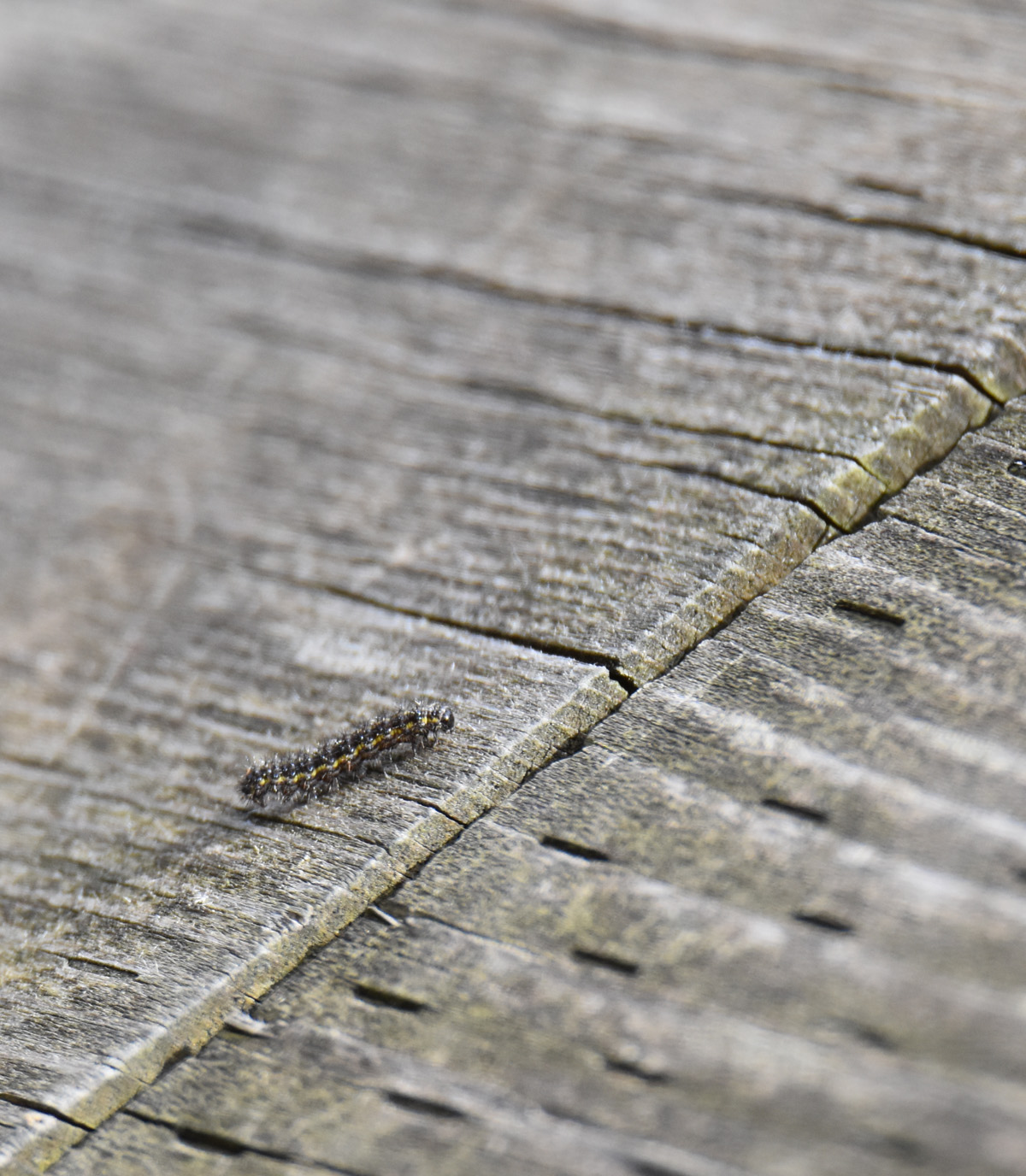On a bad weather day in March I started flipping through photos from last March and April wondering when certain birds, butterflies and blossoms began to show up in local parks. I found a series of photos of a fast-moving tiny black caterpillar that had been booting along the handrail of a boardwalk at the Riverwood Conservancy on a cold April afternoon. I remember how small it was and how surprised I was to see an active caterpillar in such a barren location when the only green leaves around were those of garlic mustard. Through the astonishingly fast method of searching the internet I found out what type of caterpillar it was, black warts, spikey tufts, yellow stripes and all.
A Leconte’s Haploa Caterpillar Emerges from Its Winter Rest in April in Ontario
On April 2 in 2017 I went for a walk around the Riverwood Conservancy in Mississauga looking mostly for Compton Tortoiseshells, Eastern Commas and Mourning Cloak butterflies. That’s probably why I noticed a tiny caterpillar, only baby-fingernail-sized in length which was briskly walking along the handrail of the second boardwalk on the Red Deer trail.
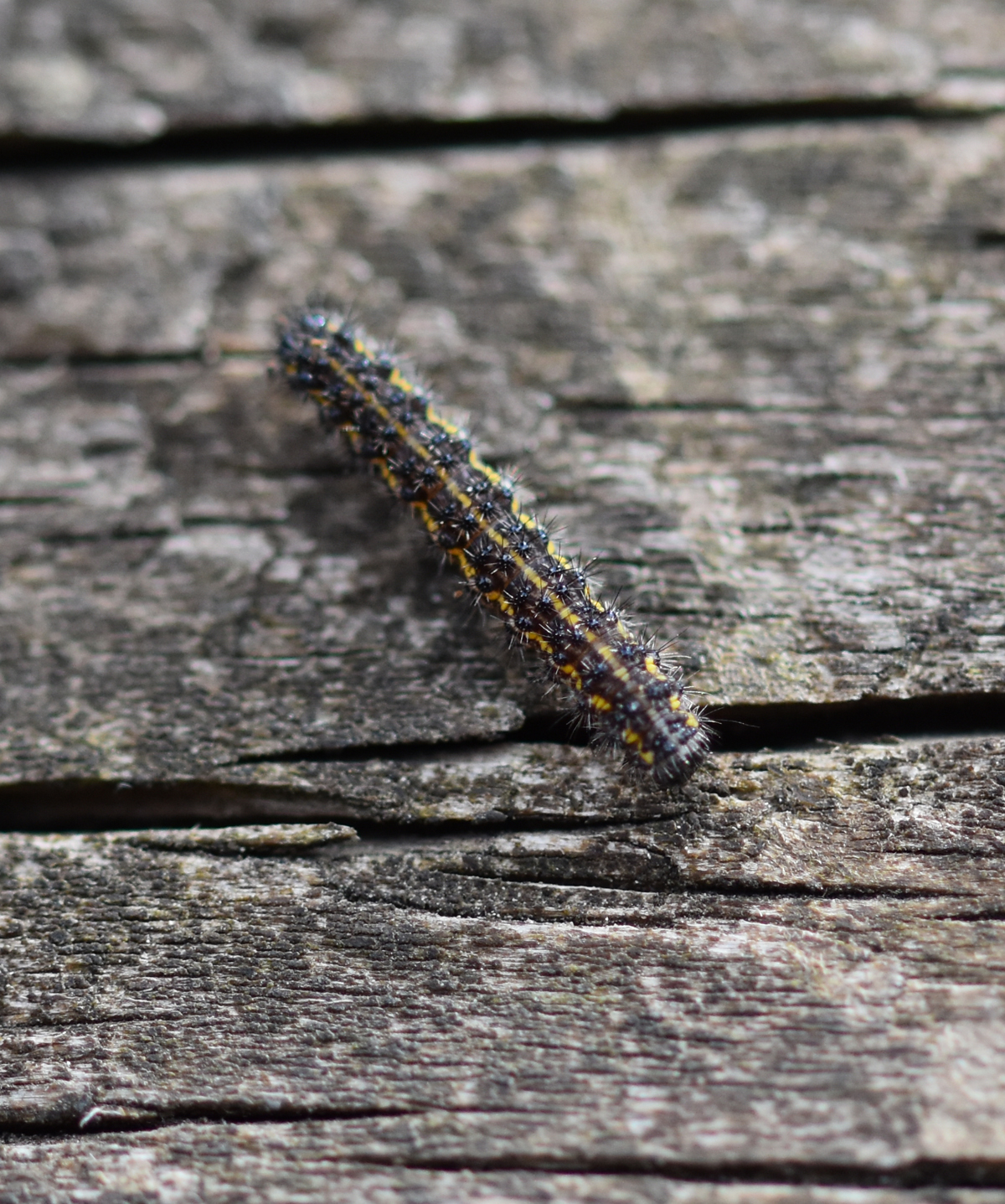
The yellow line down the back means this is not likely a Reversed Haploa which has a red-orange line or a The Neighbor which has a white line.
The black warts or bumps on its back were quite shiny and noticeable. The yellow stripes also made it quite vivid. I was hoping both would help me to later identify this winter-hardy caterpillar. They did: it was a Leconte’s Haploa moth caterpillar.
Isn’t April 2 Too Early in Ontario for Caterpillars?
I was quite curious where it had come from and where it was going as there was almost nothing green around. Aside from a crocus, a single Coltsfoot blossom, some snowdrops and some daylilies sprouting hundreds of metres back up the path and the omnipresent patches of garlic mustard there were very few growing leaves.
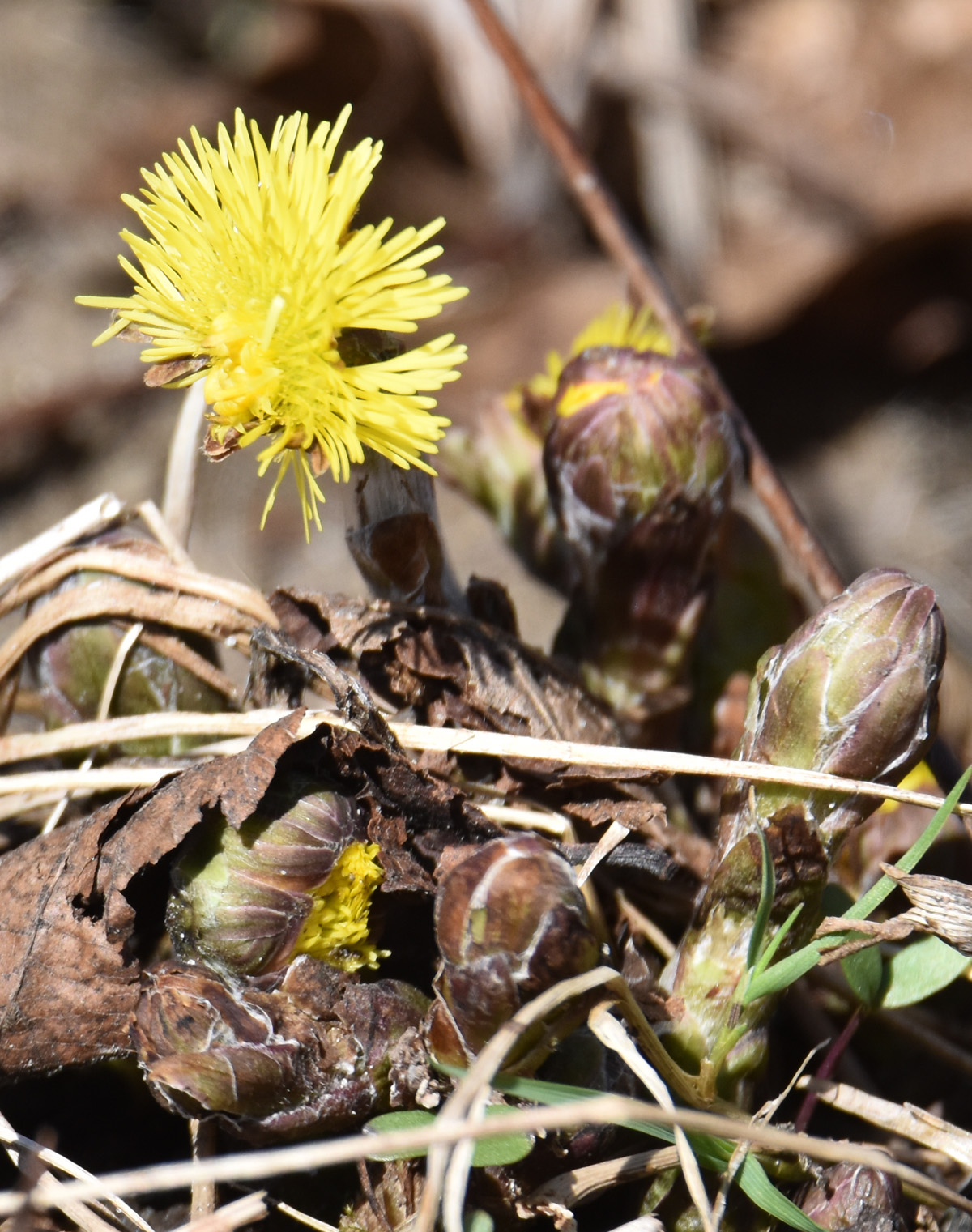
Coltsfoot blossoms before the leaves get growing.
My first suspicion on seeing this very small but still larger than a hatchling caterpillar on April 2 was that it had probably hatched the previous year. Sure enough, the Caterpillars of Eastern North America states that they overwinter as caterpillars and finish their transformation the next year. The guide says there is only one generation a year.
Another interesting (to me) reference in the Caterpillars of Eastern North America said the author has found Haploa caterpillars “crawling about foundations and buildings on early spring days.” Maybe these caterpillars are attracted in some way to man-made structures when they look for hiding places for the winter?
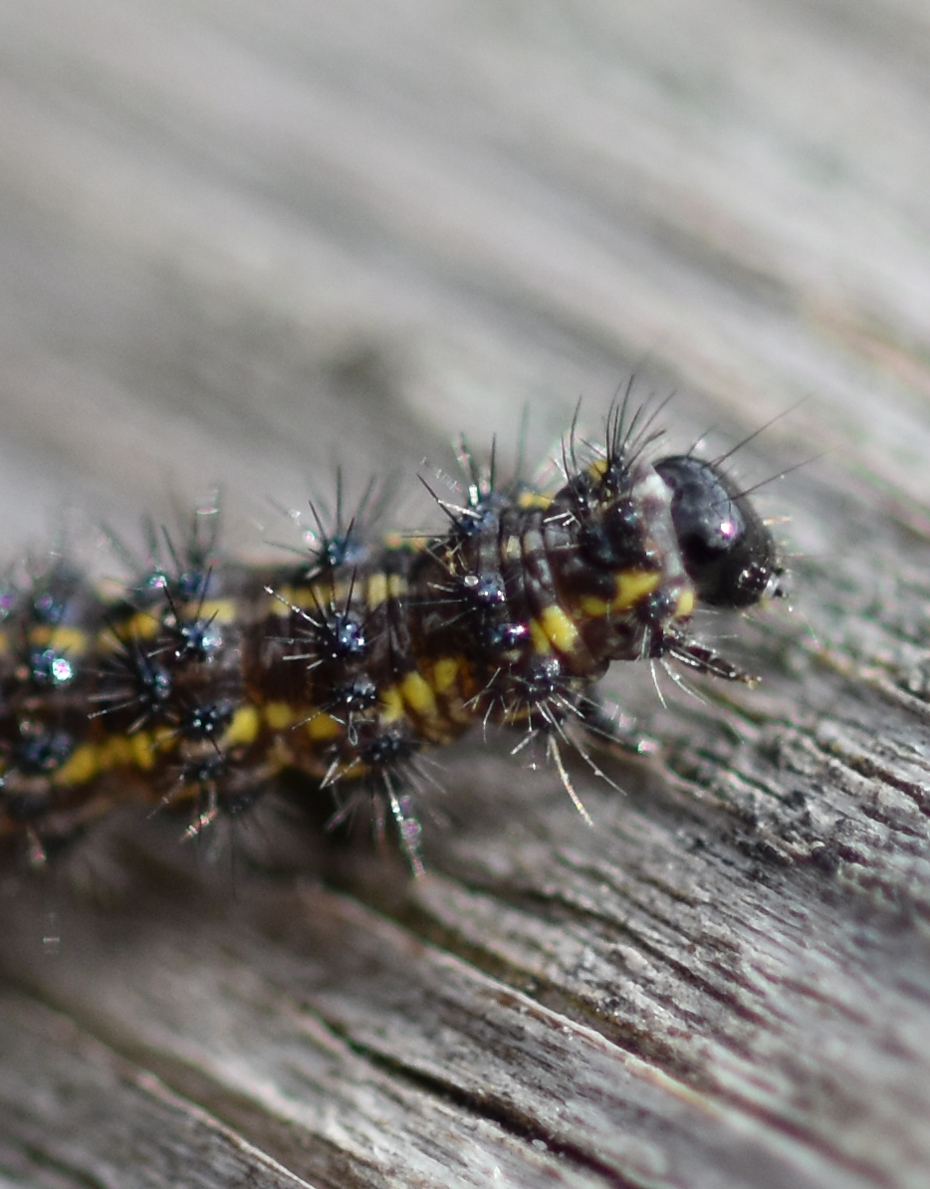
BugGuide.net mentioned the white bristles on the sides of a Leconte’s Haploa which bothered me because I thought they were all black. Then I looked this close and they are right–some are white!
What Was My Leconte’s Haploa Caterpillar Looking for to Eat?
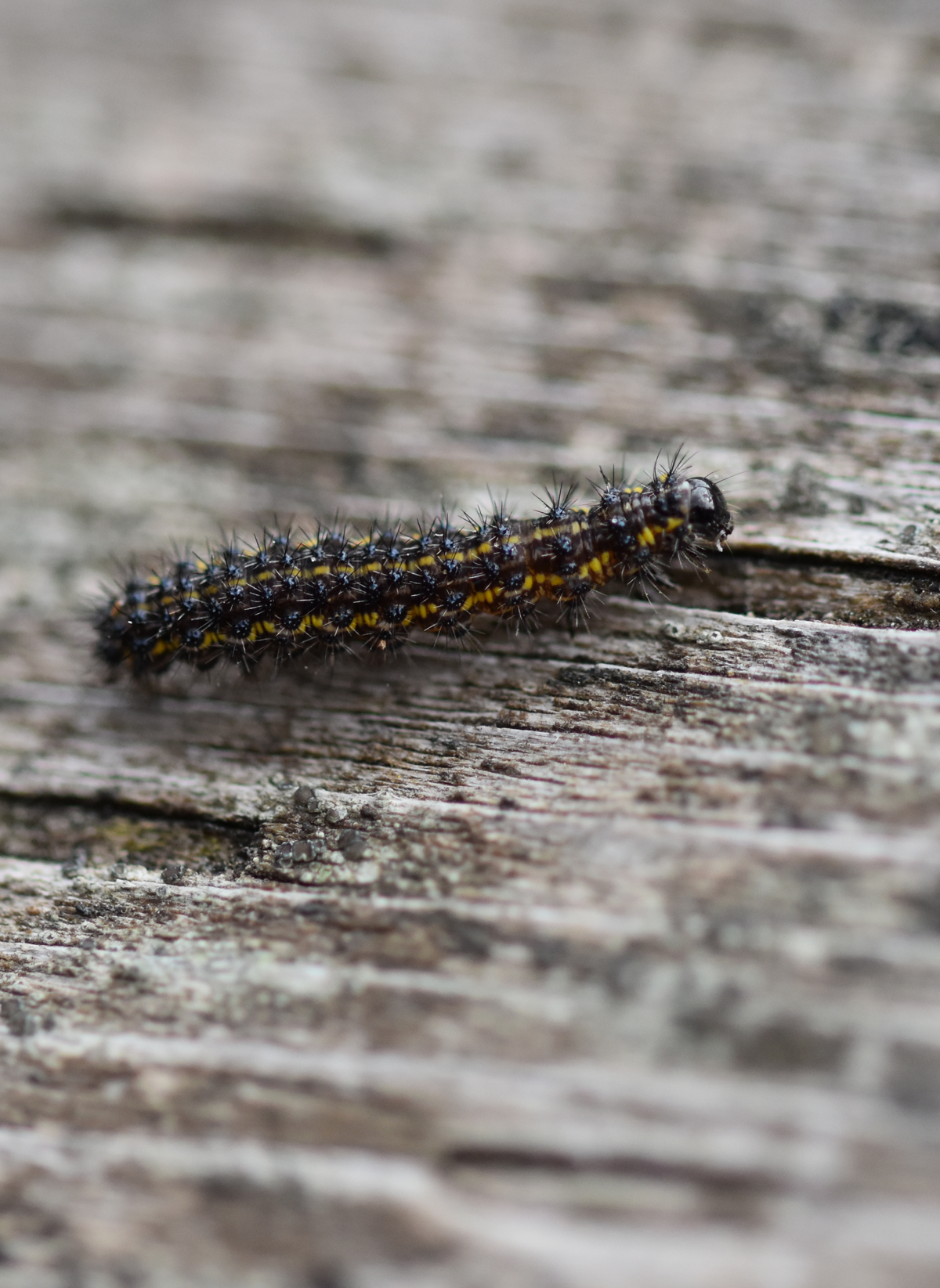
Not much to eat on the railing!
Apparently this moth’s caterpillars will eat a variety of plants. The Caterpillars of Eastern North America says they will eat plants in the sunflower and borage family and are often found on Joe-pye Weed and its relatives. BugGuide.net also lists apple, blackberry, peach and spearmint as forage plants.
Given this wide variety of acceptable plants, it’s not surprising to me that this is a fairly common moth at Riverwood. I’ve seen the adults many times although this April encounter was my first meeting with a caterpillar-stage one.
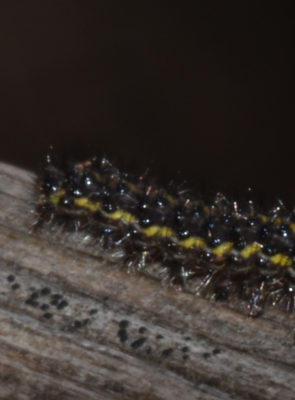
The warts or shiny black bumps on the caterpillar were quite obvious when you were looking at it but are harder to see on the photos.
Who Was Mr. Leconte or LeConte for Whom the Moth and Birds Are Named?
I’ve noticed the name Leconte or LeConte before in nature guides. There is, for example, a LeConte’s Sparrow and the Leconte’s Haploa moth. Since it was a cold day in March, I decided to look up who they were named by or for.
I immediately tripped over two names: John Eatton and John Lawrence.
John Eatton Le Conte, Jr., also spelled as Leconte, lived from 1784-1860 according to Wikipedia. He co-authored a book in French on Lepidoptera including caterpillars of northern America. He also studied and painted tortoises and turtles. His son, John Lawrence, grew up to become an important entomologist.
John Lawrence LeConte was an authority on beetles and named and described thousands of types. He also collected birds for the Smithsonian while on his travels.
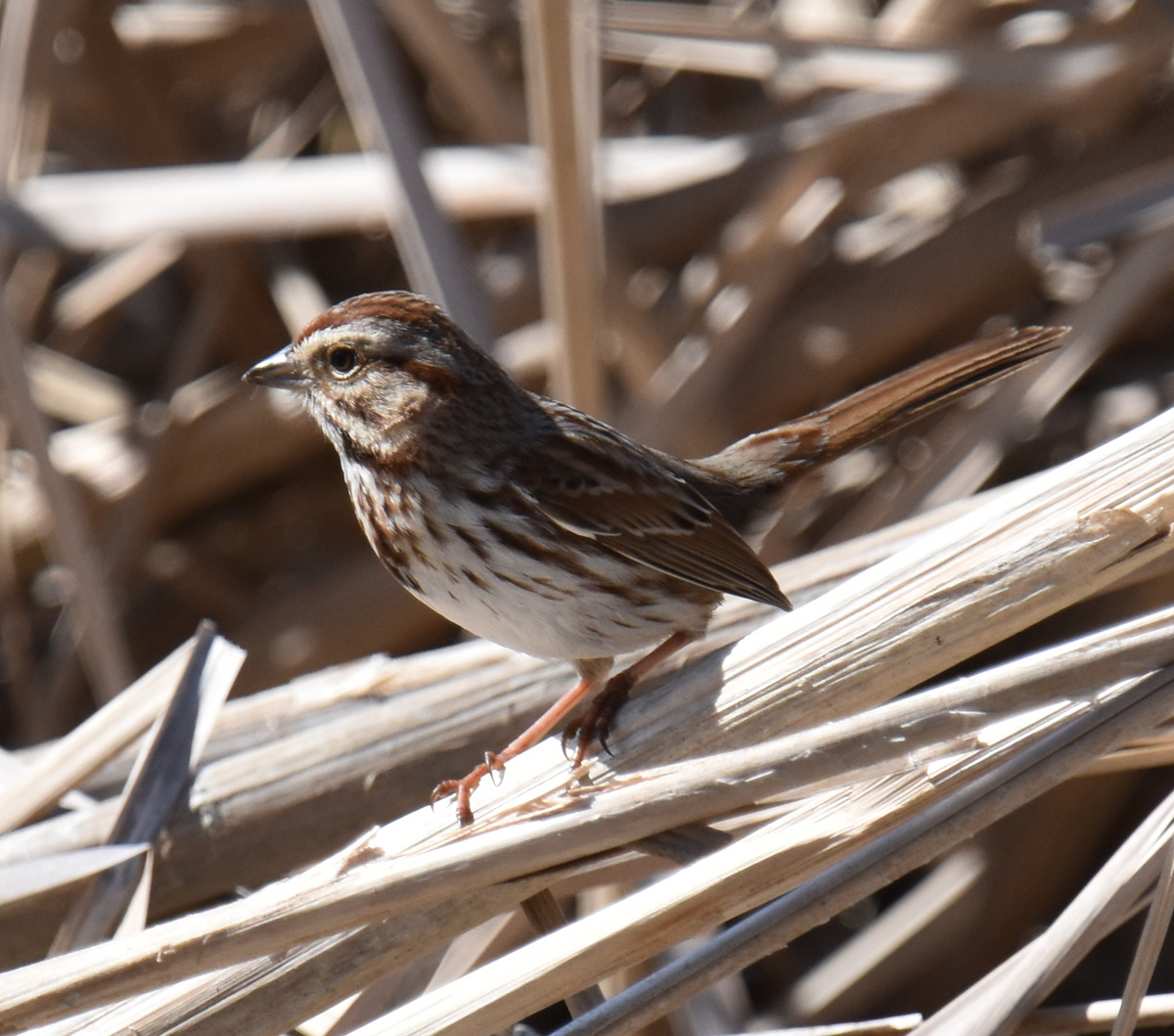 I’d love to include a photo of a LeConte’s Sparrow but I only saw a Song Sparrow that April afternoon.
I’d love to include a photo of a LeConte’s Sparrow but I only saw a Song Sparrow that April afternoon.
The LeConte’s Sparrow was named by John James Audubon either after John Lawrence or after JL’s cousin who was also named John!
The Leconte’s Haploa moth was named after the beetle researcher John Lawrence LeConte.
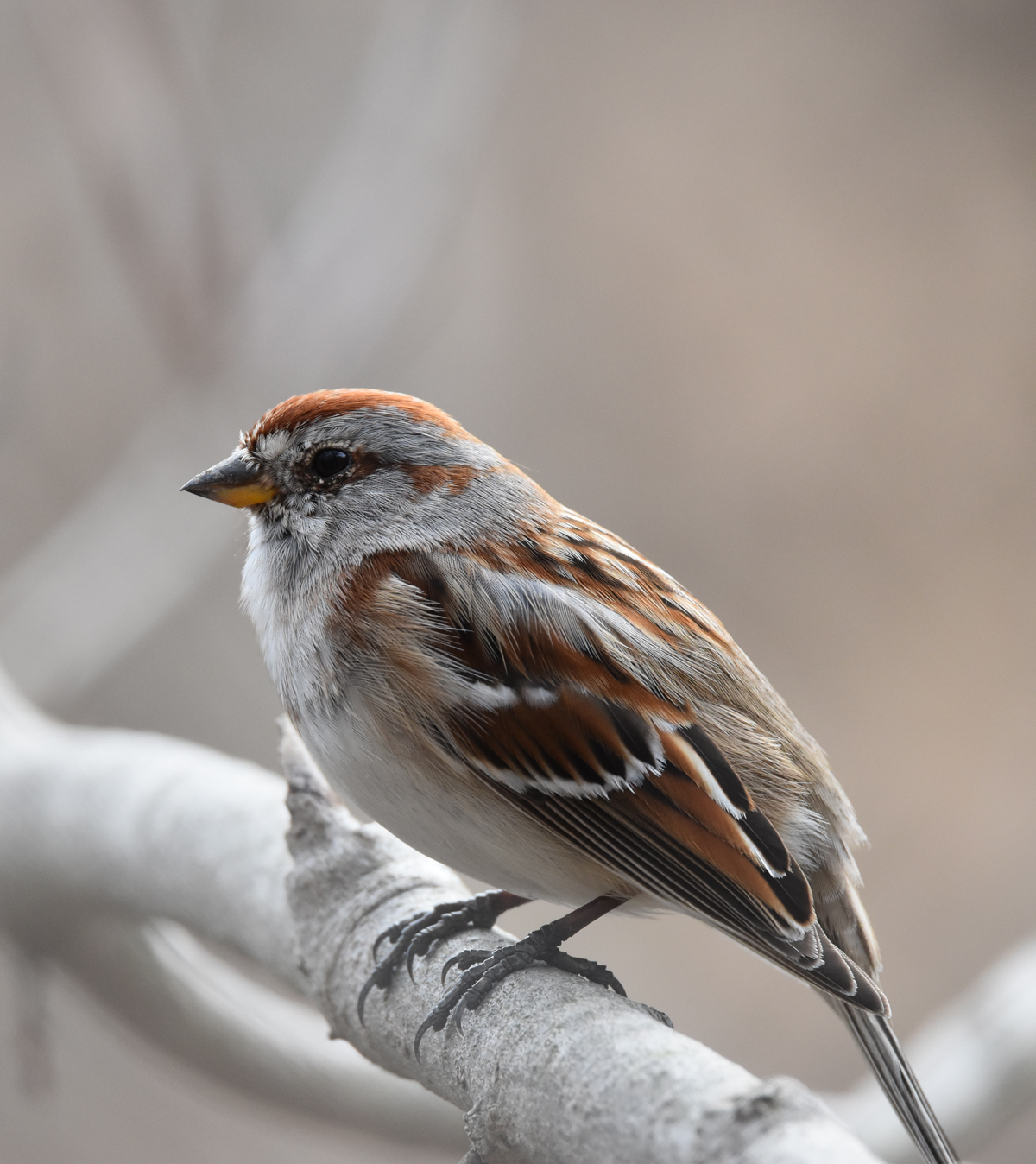
This American Tree Sparrow is also not a LeConte’s Sparrow but was also posing that April day.
Don’t ask me why the bird people decided on the LeConte spelling and the insect people on the Leconte spelling! Apparently John used both when signing his name.
So now having looked at a portrait online I can put a face to the name LeConte when I read it in a nature guide or meet one of his namesakes on one of my nature rambles. Hopefully, I’ll see some more Leconte’s Haploas as either caterpillars or moths again this year!
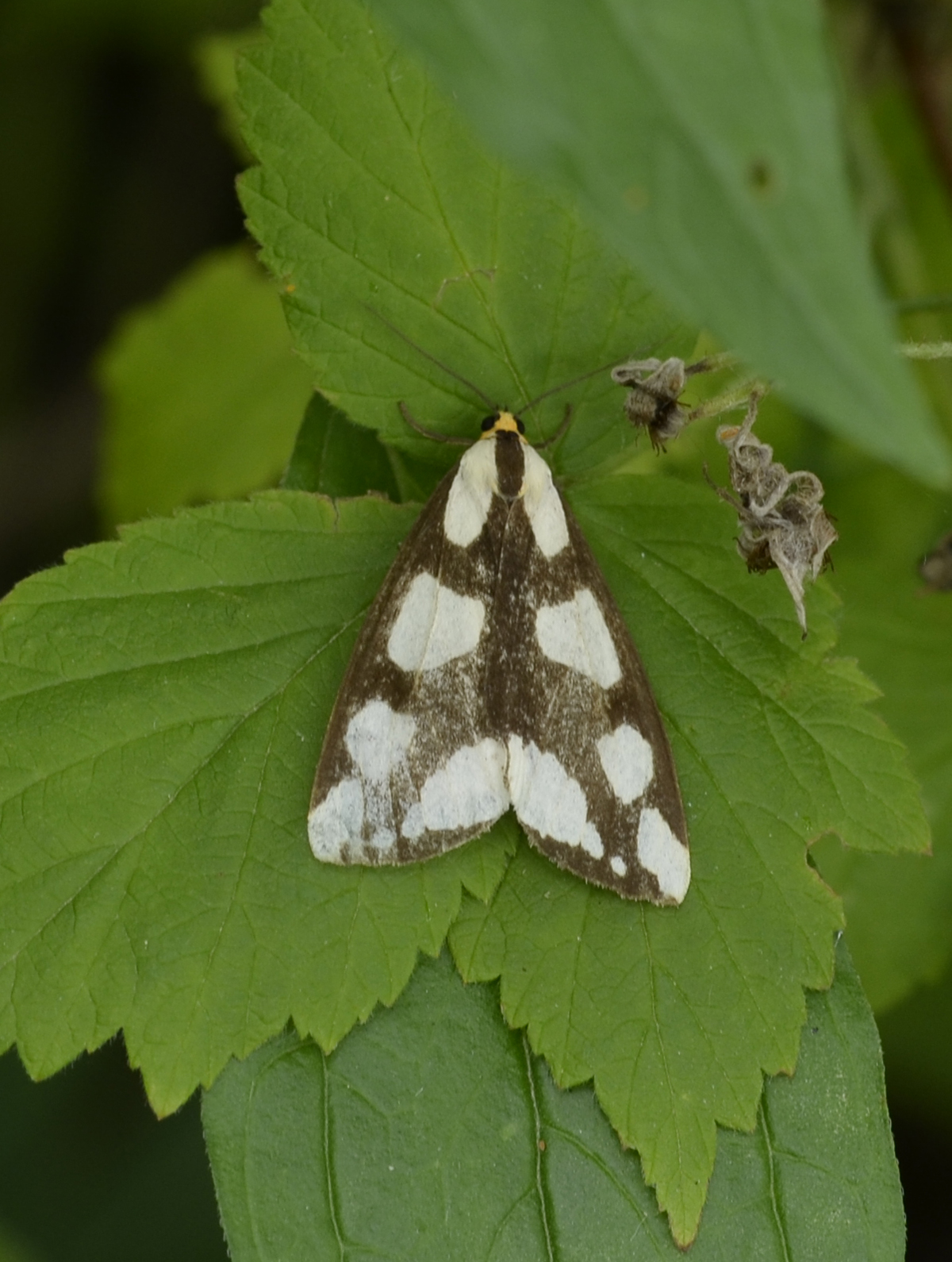
Leconte’s Haploa moths can vary quite a bit from almost all white to this more common pattern. I’ve seen them perched on leaves fairly often in the daytime.
Related Reading
- My Butterflies and Moths of Mississauga, Oakville and Toronto Ontario
- Beetlemania by Marcia Bonta
- Biographical Memoir of John Lawrence LeConte by Samuel H Scudder from 1884
Join In
What’s the earliest you have found a caterpillar outside where it belongs, not just in your salad greens? Please share your sightings with a comment.

